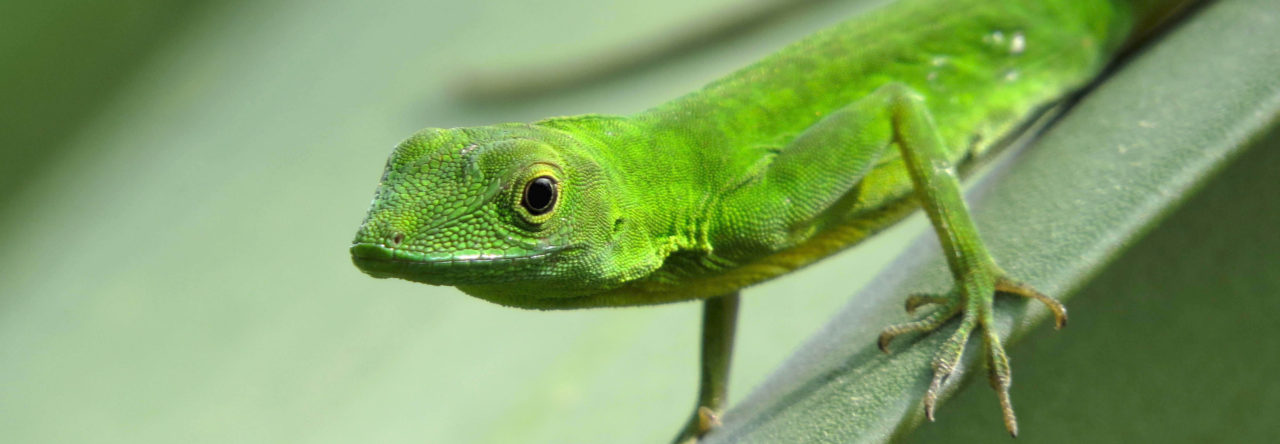Yes, it’s true. A “third eye” does exist, not only in the ancient Hindu literature and the new age imagination, but in birds, amphibians, reptiles, fish, lampreys, and hagfishes. We’re talking about the pineal gland, a small organ located on top of the brain, just underneath the surface of the skull. Although it doesn’t have visual capabilities in the image-forming sense, it is intrinsically photosensitive, responding to light signals without any help from the lateral eyes. (Mammals, including humans, have a pineal gland too…but it has lost the ability to detect light).

You can see the parietal eye on top of this anole’s head (it’s the tiny circle in the middle). The pineal gland can’t be seen externally, but it’s just posterior to the parietal eye and right underneath the surface of the skull. Photo credit: TheAlphaWolf, License:Creative Commons Attribution-Share Alike 3.0 Unported
Anoles, and some other lizards, actually have two “third eyes,” one being the pineal gland, and the other being the parietal eye, which can be seen in the picture above.
Read More








